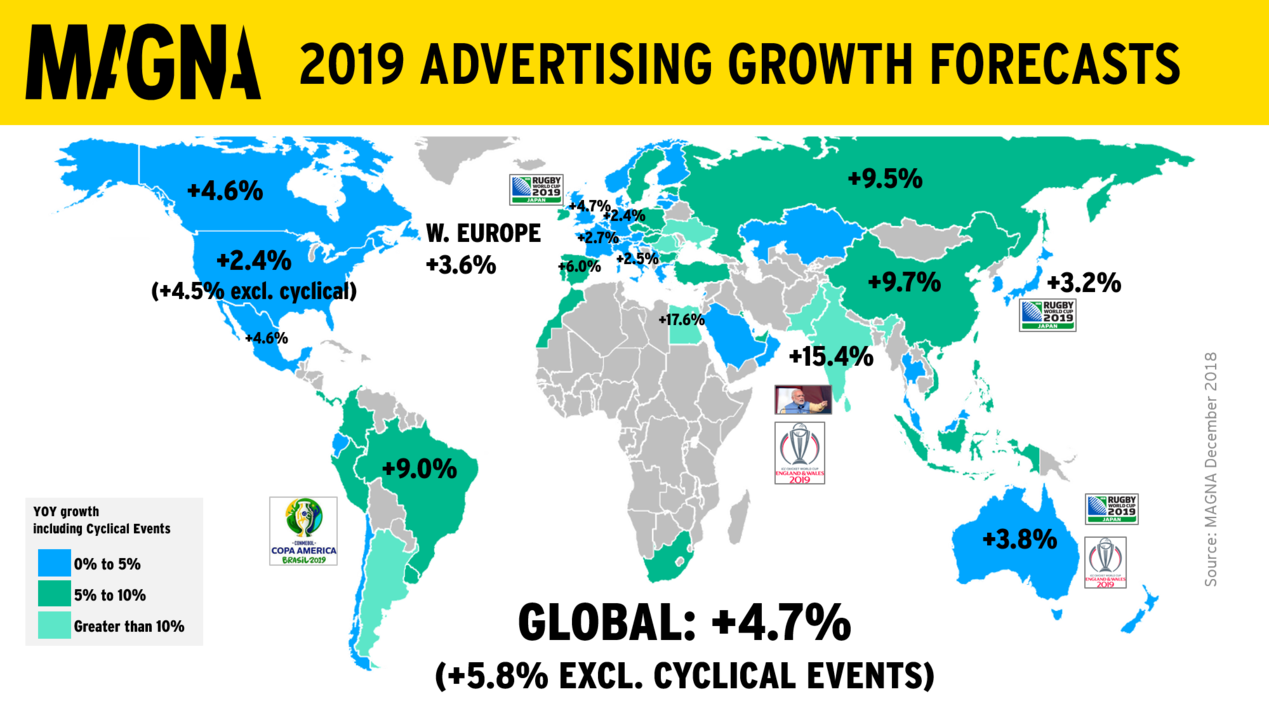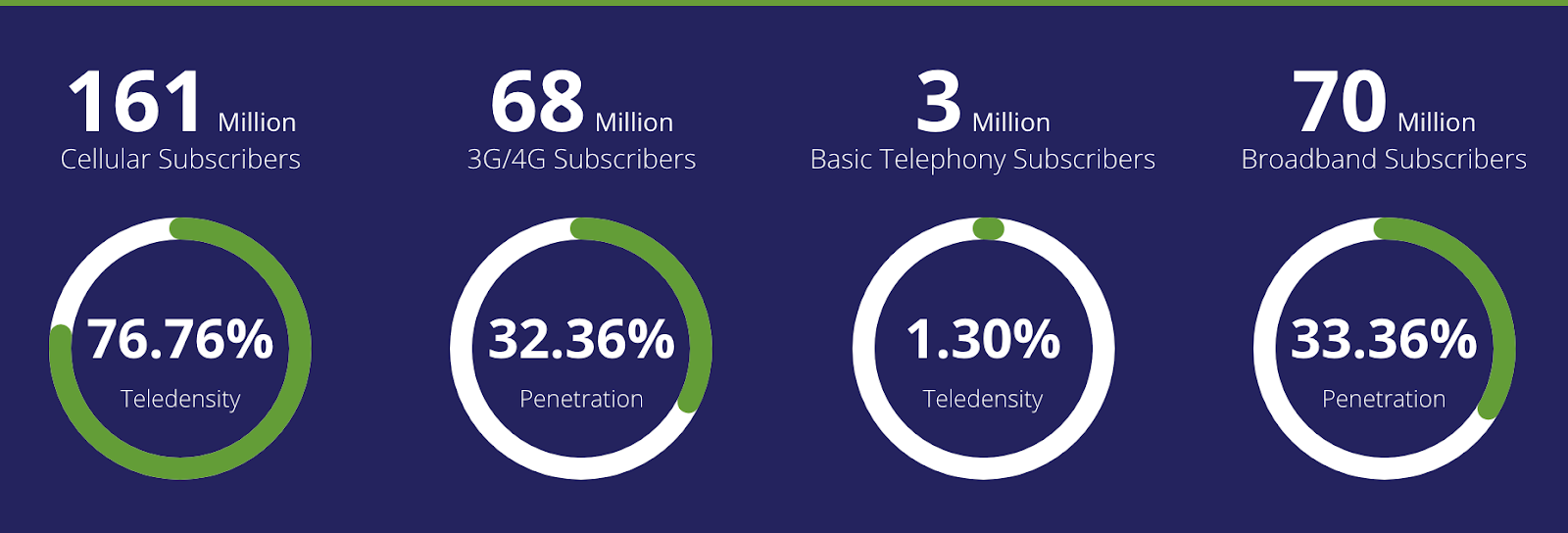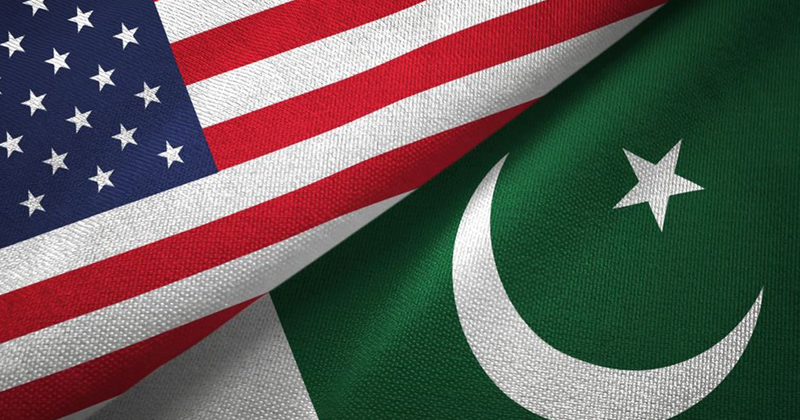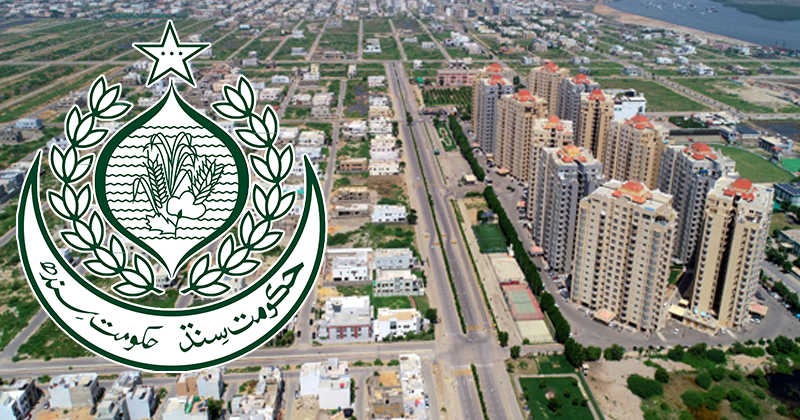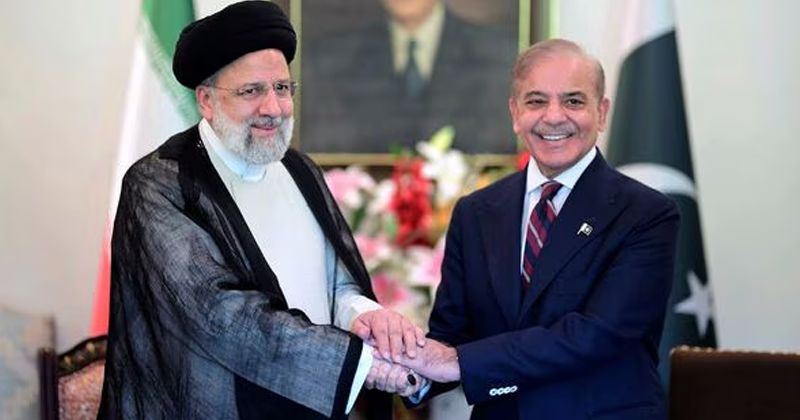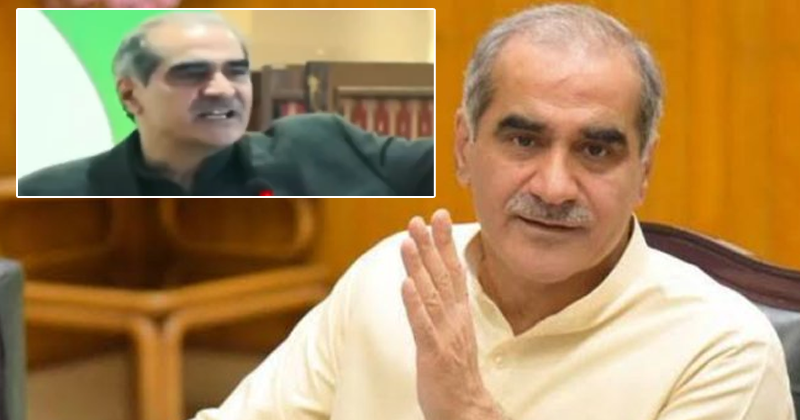Rapid growth of broadband access in Pakistan is changing the country's media landscape. Digital advertising revenue is forecast to grow by 32% in 2019 to Rs. 10.8 billion ($103 million), 12% of total national advertising revenue (NAR), according to Magna Advertising. Digital marketing expert Lars Anthonisen believes Pakistan is quickly becoming a "digital first country".
Anthonisen sees "new opportunities for brands to reach and engage with consumers who may have previously been overlooked". Overall ad spend in Pakistan is expected to rise by 15% in 2019 to Rs. 88.3 billion ($840 million) following a steep decline (-11%) in 2018, according to a Branding in Asia report. Growing availability of smartphones, tablets and mobile broadband is extending the reach of advertisers to digital media where it is possible to precisely target prospective customers.
Return to Media Growth in 2019:
Magna expects to see a return to growth in Pakistani media revenue in 2019, with television, which makes up two-thirds of total NAR, benefitting from the 2019 Cricket World Cup (+15%), according to a Branding in Asia report.
In 2018, Pakistan media industry went through a major shakeout after a long period of rapid double-digit growth since the turn of the century. Hundreds of journalists and other staff lost their jobs last year. It was a horrible year for Pakistani media industry which saw steep 11% decline in revenue during the year.
Digital Advertising Growth:
Digital advertising is forecast to grow by 32% to Rs. 10.8 billion ($103 million), 12% of total national advertising revenue (NAR), according to Magna Advertising. Digital marketing expert Lars Anthonisen believes Pakistan is quickly becoming a "digital first country". Anthonisen sees "new opportunities for brands to reach and engage with consumers who may have previously been overlooked".
Growing availability of smartphones, tablets and mobile broadband is extending the reach of advertisers to digital media where it is possible to precisely target prospective customers. As of May 2019, there are over 70 million broadband subscriptions in Pakistan and more than a million new subscribers are are being added every month, according to data from Pakistan Telecommunication Authority (PTA).
Overall Media Market:
Print and radio are likely to grow as well, now that the initial shock of the government’s strict reforms has worn off and a preliminary IMF bailout agreement has been reached. Digital formats, particularly social (+39%) and video (+31%), will continue to see the strongest growth, +32% to Rs. 10.8 billion ($103 million), 12% of total NAR.
The ad spend in Pakistan is expected to grow by 15% in 2019 to Rs. 88.3 billion ($840 million) following a steep decline (-11%) in 2018. In 2018, Pakistan media industry went through a major shakeout after a long period of rapid double-digit growth since the turn of the century. Hundreds of journalists and other staff lost their jobs. At least one TV channel, Waqt News, was closed while several others downsized. While such consolidation was long overdue after nearly two-decade long period of explosive growth, the PTI government's decision to reduce advertising budget, which constitutes nearly a quarter of all ad spending in the country, appears to have been the main trigger. Those affected by consolidation are accused the government of exercising press censorship by cutting its ad spending.
Pakistan Broadband Growth:
As of May 2019, there are over 70 million broadband subscriptions in Pakistan and more than a million new subscribers are are being added every month, according to data from Pakistan Telecommunication Authority (PTA).
China is aggressively pursuing its plans to build a global digital superhighway that runs through Pakistan. This "Digital Silk Road" involves laying fiber optic cables in Pakistan which connect with China to the north and link with Africa and the Arab World via undersea cable to be laid from Gwadar Deep Sea Port built as part of China-Pakistan Economic Corridor (CPEC).
A 820-kilometer long China-Pakistan fiber optic cable has already been laid between the city of Rawalpindi, Pakistan in the south and the Khunjerab Pass, China in the north and operational since July, 2018.
By 2020, the 6,299 kilometers of underwater cables will extend to Djibouti from Gwadar and form the Digital Silk Route between Asia and Africa. At the same time, a space-based Silk Road will provide satellite navigation support to all BRI (Belt Road Initiative) countries. The first Beidou base station of the Space Silk Road is already operational in Pakistan since 2017. BeiDou is making rapid progress with 30 BRI countries already linked up.
When completed, the ambitious global initiative would use an exclusive satellite navigation system, BeiDou, fiber networks and 5G on land and submarine cables to create a multi-dimensional digital mega-project across land, sea and space.
Summary:
Rapid growth of broadband access in Pakistan is changing the country's media landscape. Digital advertising is forecast to grow by 32% to Rs. 10.8 billion ($103 million), 12% of total national advertising revenue (NAR), according to Magna Advertising. Digital marketing expert Lars Anthonisen believes Pakistan is quickly becoming a "digital first country". Anthonisen sees
"new opportunities for brands to reach and engage with consumers who may have previously been overlooked". Magna expects to see a return to media market growth in 2019, with television, which makes up two-thirds of total NAR, benefitting from the 2019 Cricket World Cup (+15%), according to a Branding in Asia report. Growing availability of smartphones, tablets and mobile broadband is extending the reach of advertisers to digital media where it is possible to precisely target prospective customers.
http://www.riazhaq.com/2019/07/pakistan-digital-media-advertising.html
Anthonisen sees "new opportunities for brands to reach and engage with consumers who may have previously been overlooked". Overall ad spend in Pakistan is expected to rise by 15% in 2019 to Rs. 88.3 billion ($840 million) following a steep decline (-11%) in 2018, according to a Branding in Asia report. Growing availability of smartphones, tablets and mobile broadband is extending the reach of advertisers to digital media where it is possible to precisely target prospective customers.
Return to Media Growth in 2019:
Magna expects to see a return to growth in Pakistani media revenue in 2019, with television, which makes up two-thirds of total NAR, benefitting from the 2019 Cricket World Cup (+15%), according to a Branding in Asia report.
In 2018, Pakistan media industry went through a major shakeout after a long period of rapid double-digit growth since the turn of the century. Hundreds of journalists and other staff lost their jobs last year. It was a horrible year for Pakistani media industry which saw steep 11% decline in revenue during the year.
Digital Advertising Growth:
Digital advertising is forecast to grow by 32% to Rs. 10.8 billion ($103 million), 12% of total national advertising revenue (NAR), according to Magna Advertising. Digital marketing expert Lars Anthonisen believes Pakistan is quickly becoming a "digital first country". Anthonisen sees "new opportunities for brands to reach and engage with consumers who may have previously been overlooked".
Growing availability of smartphones, tablets and mobile broadband is extending the reach of advertisers to digital media where it is possible to precisely target prospective customers. As of May 2019, there are over 70 million broadband subscriptions in Pakistan and more than a million new subscribers are are being added every month, according to data from Pakistan Telecommunication Authority (PTA).
Overall Media Market:
Print and radio are likely to grow as well, now that the initial shock of the government’s strict reforms has worn off and a preliminary IMF bailout agreement has been reached. Digital formats, particularly social (+39%) and video (+31%), will continue to see the strongest growth, +32% to Rs. 10.8 billion ($103 million), 12% of total NAR.
The ad spend in Pakistan is expected to grow by 15% in 2019 to Rs. 88.3 billion ($840 million) following a steep decline (-11%) in 2018. In 2018, Pakistan media industry went through a major shakeout after a long period of rapid double-digit growth since the turn of the century. Hundreds of journalists and other staff lost their jobs. At least one TV channel, Waqt News, was closed while several others downsized. While such consolidation was long overdue after nearly two-decade long period of explosive growth, the PTI government's decision to reduce advertising budget, which constitutes nearly a quarter of all ad spending in the country, appears to have been the main trigger. Those affected by consolidation are accused the government of exercising press censorship by cutting its ad spending.
Pakistan Broadband Growth:
As of May 2019, there are over 70 million broadband subscriptions in Pakistan and more than a million new subscribers are are being added every month, according to data from Pakistan Telecommunication Authority (PTA).
China is aggressively pursuing its plans to build a global digital superhighway that runs through Pakistan. This "Digital Silk Road" involves laying fiber optic cables in Pakistan which connect with China to the north and link with Africa and the Arab World via undersea cable to be laid from Gwadar Deep Sea Port built as part of China-Pakistan Economic Corridor (CPEC).
A 820-kilometer long China-Pakistan fiber optic cable has already been laid between the city of Rawalpindi, Pakistan in the south and the Khunjerab Pass, China in the north and operational since July, 2018.
By 2020, the 6,299 kilometers of underwater cables will extend to Djibouti from Gwadar and form the Digital Silk Route between Asia and Africa. At the same time, a space-based Silk Road will provide satellite navigation support to all BRI (Belt Road Initiative) countries. The first Beidou base station of the Space Silk Road is already operational in Pakistan since 2017. BeiDou is making rapid progress with 30 BRI countries already linked up.
When completed, the ambitious global initiative would use an exclusive satellite navigation system, BeiDou, fiber networks and 5G on land and submarine cables to create a multi-dimensional digital mega-project across land, sea and space.
Summary:
Rapid growth of broadband access in Pakistan is changing the country's media landscape. Digital advertising is forecast to grow by 32% to Rs. 10.8 billion ($103 million), 12% of total national advertising revenue (NAR), according to Magna Advertising. Digital marketing expert Lars Anthonisen believes Pakistan is quickly becoming a "digital first country". Anthonisen sees
"new opportunities for brands to reach and engage with consumers who may have previously been overlooked". Magna expects to see a return to media market growth in 2019, with television, which makes up two-thirds of total NAR, benefitting from the 2019 Cricket World Cup (+15%), according to a Branding in Asia report. Growing availability of smartphones, tablets and mobile broadband is extending the reach of advertisers to digital media where it is possible to precisely target prospective customers.
http://www.riazhaq.com/2019/07/pakistan-digital-media-advertising.html


